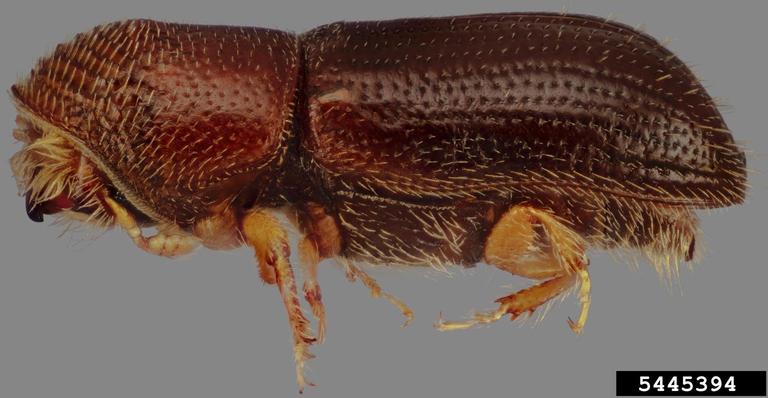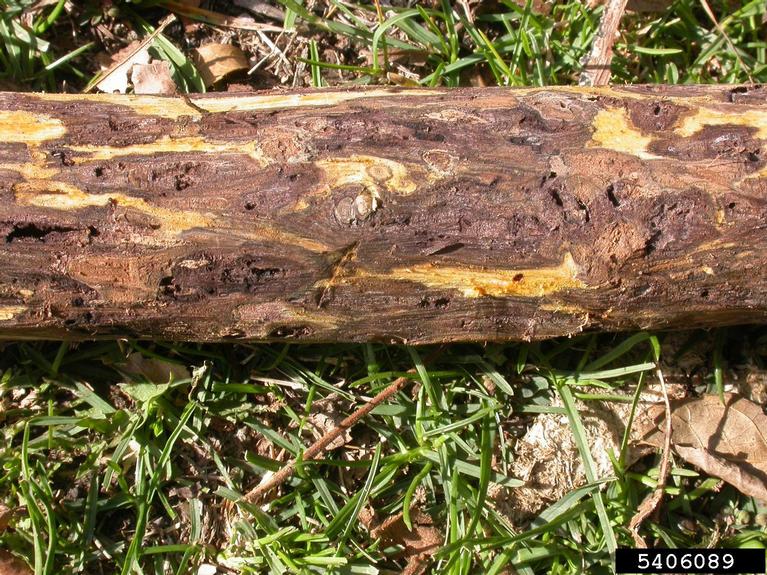FORESTRY
IN SOUTH DAKOTA
Thousand Cankers Disease
Thousand cankers disease has not been detected in South Dakota.
Thousand cankers disease has two components: the fungal pathogen, Geosmithia morbida, and the walnut twig beetle, Pityophthorus juglandis. The walnut twig beetle is the vector for the pathogen that will kill the tree. When the beetle lands on a black walnut, Juglans nigra, to burrow in to lay its eggs, it carries spores of the fungal pathogen from other infected trees. The spores then rub off the beetle and are left to germinate. Once the beetle is inside the tree, it will emit pheromones that call other walnut twig beetles to that tree. Over time, the cankers will cover most of the trunk and even the branches of the tree, which will lessen the tree's ability to transport nutrients throughout it. This leads to the decline and death of the tree.
It is rare to spot the beetle if you are not specifically looking for it. They are only about 1.5 to 2mm in length. The beetle is native to southwestern US and Mexico and it is believed the fungus is from that same region. Once the tree is infected, there is no curing it. Currently, the best measure to prevent the spread of this disease is by not moving walnut firewood from infected areas. There are not any preventative measures to prevent this disease. Fortunately, Thousand cankers disease is not yet found in South Dakota.

Adult Walnut Twig Beetle, Steven Valley, Oregon Department of Agriculture

Tree Damage, Karen Snover-Clift, Cornell University

Cankers form around the beetles' entrance holes, Ned Tisserat, Colorado State University